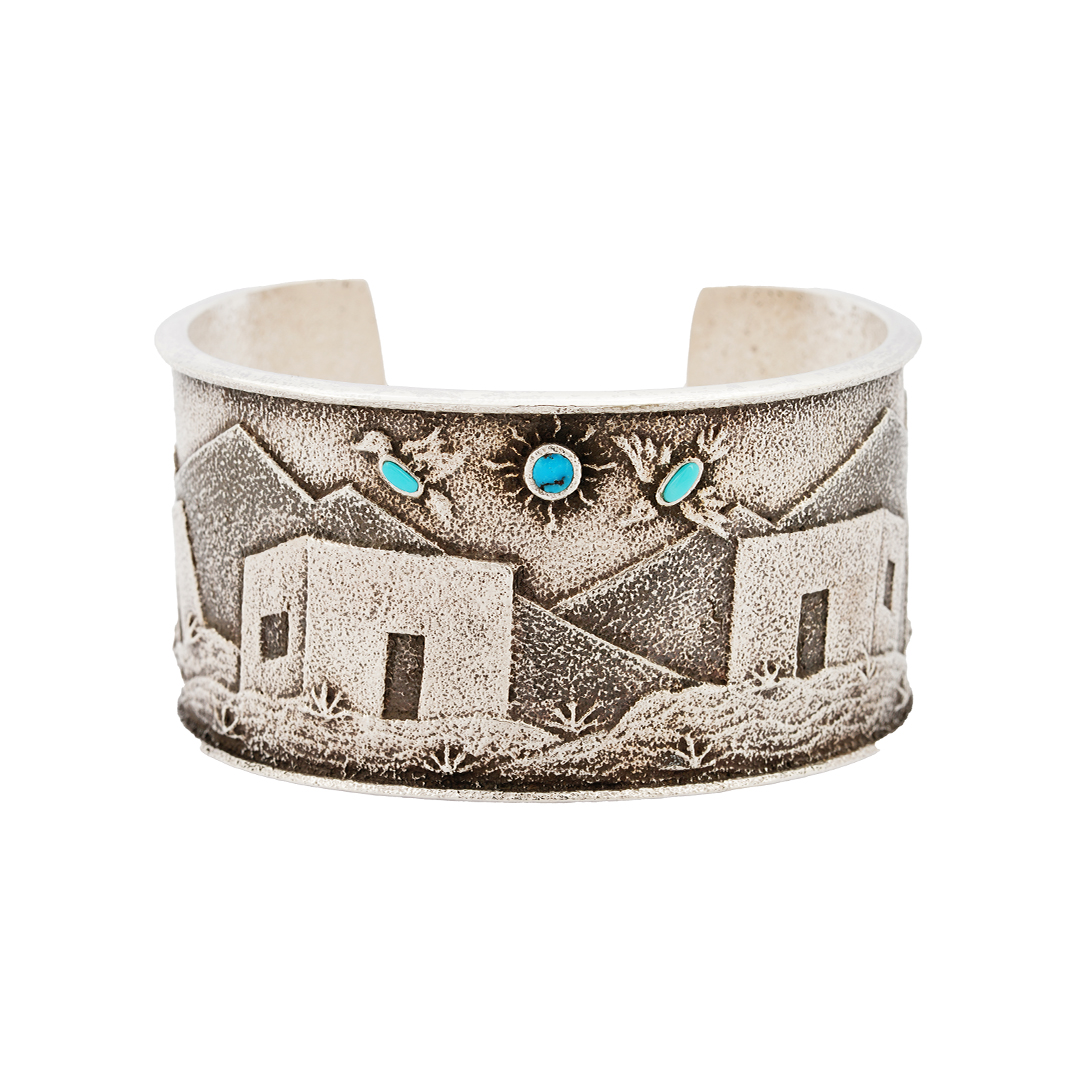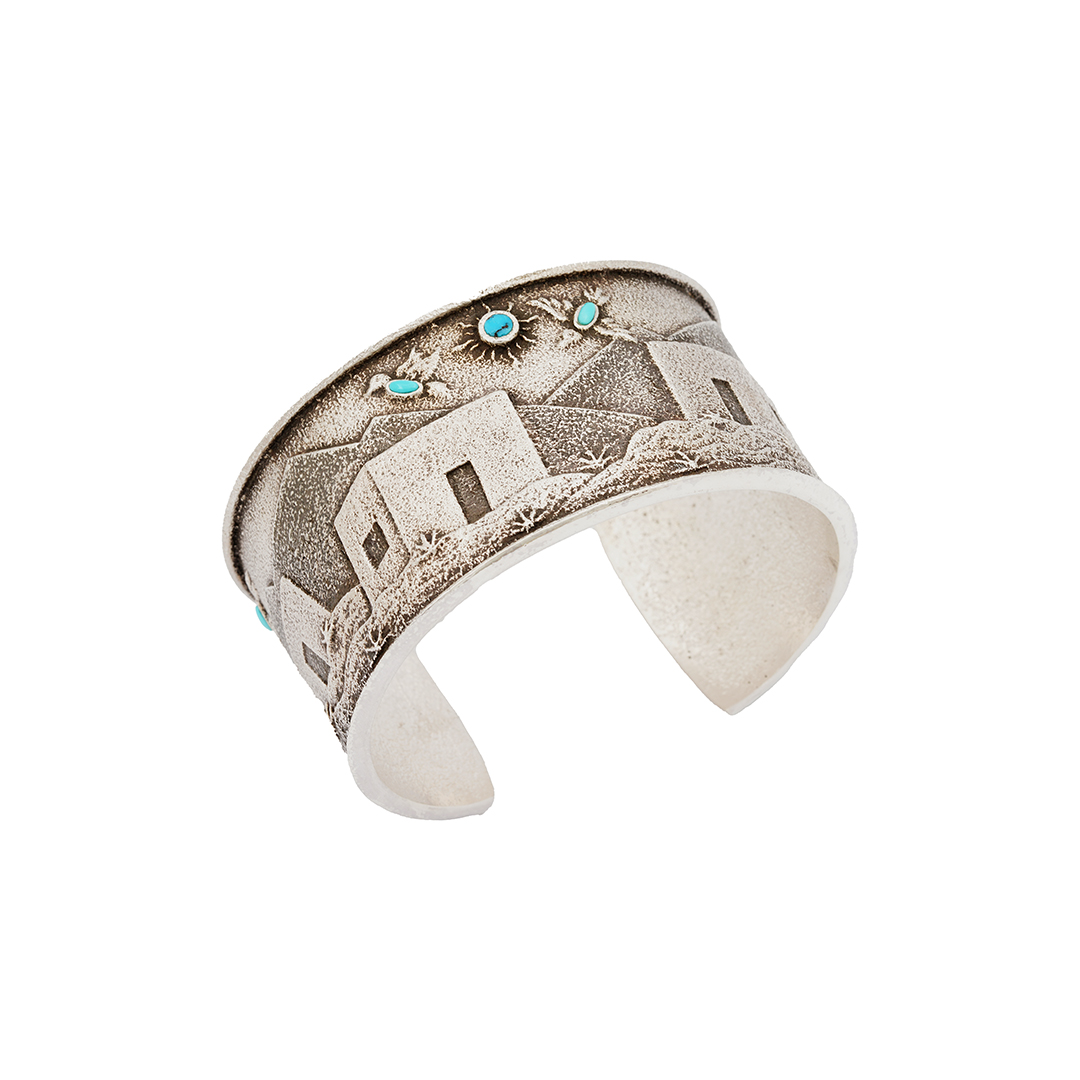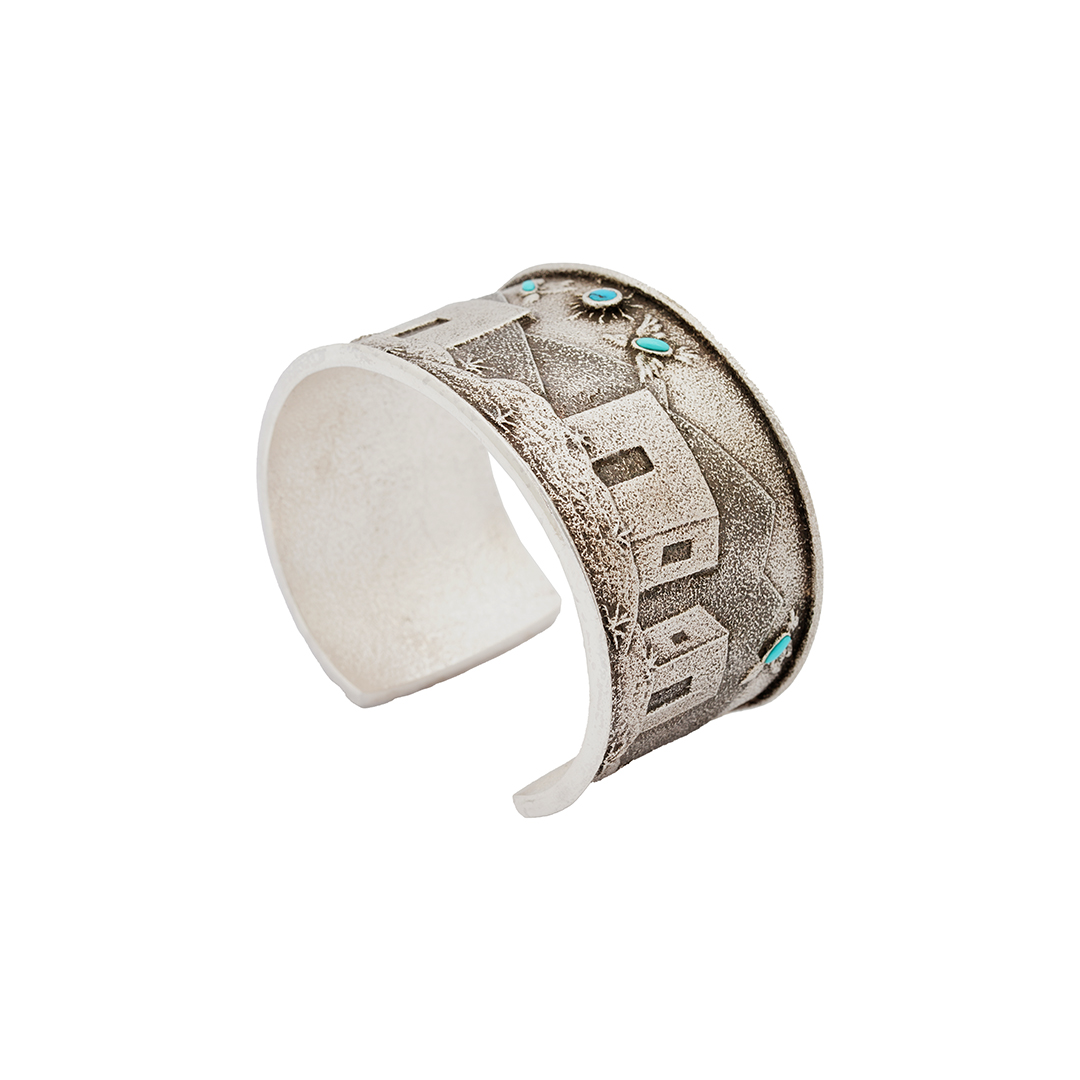Robert Begay (Navajo)
Robert Whitehair Begay is a Navajo jeweler continuing the legacy of his parents, Rebecca and Darryl Dean Begay—both highly respected for their work in tufa cast jewelry. Raised in a home where art and tradition were inseparable, Robert began carving tufa stone at just four years old. By the time he was six, he had already earned recognition for his work, winning first place for a silver tufa cast seed pot and third place for a painting at the 2009 Santa Fe Indian Market.
Robert’s work reflects the deep roots of Navajo silversmithing but also shows a clear voice of his own. He uses the traditional method of tufa casting, carving each design by hand into soft volcanic stone before pouring molten silver into the mold. His jewelry often includes meaningful carved imagery—such as hand designs or animal forms—and is paired with high-grade natural stones like Lone Mountain turquoise.
In 2019, Robert received the “Best of Youth” award at both the Gallup Inter-Tribal Ceremonial and the SWAIA Santa Fe Indian Market for his pieces Cheii’s Land and Cheii’s Style. These early accolades speak to his talent and commitment to continuing—and evolving—his family’s legacy.
Now forging his own path as a silversmith, Robert brings forward the teachings of his parents while adding new ideas and energy to the tradition.



